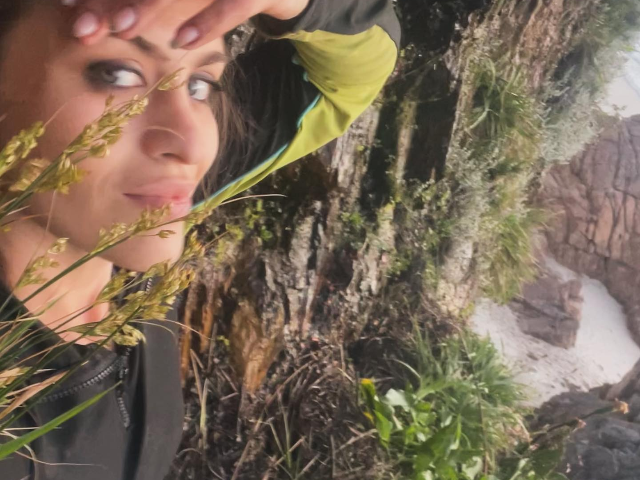
-
Curio-Shop Afro-Motif Music: Who Will Rid Us Of This Sad Sight?
02 May 2011 by Jasmine Stone in 2oceansvibe Columnists, Featured, Music
Long ago, before my voice broke and I started realising that there were things that one needed to be shy about, I would visit my mother’s sewing shop on my way home after school. It was located at the back of a grocery store’s basement storage area. The grocer had partitioned off an unused section of his building and it was used by my mother and other ladies.
To get to my mother’s desk I had to walk through a curio shop. It was one of those dreadfully cheesy African curio shops, with the carved wooden and stone animals, the beads and the bowls, like you find at any South African airport, the Moyo restaurants and the Durban beachfront. I spent many hours in that curio shop looking at all the stuff and wondering out loud how a little Zulu warrior figurine made of polished wood, little flaps of leather and old tin could possibly cost R450.
I remember only once being genuinely excited about seeing a curiosity in that shop. It was a xylophone made of dry bamboo and gourds. It was Mozambican, if I remember correctly, and at the time I thought it was the coolest thing I had ever seen.
It was cool because for the first time I thought to myself, “tourists can buy this thing that we Africans actually use in our daily lives”. The other crap in the curio shop fascinated me mostly because I had never seen it anywhere outside of a curio shop. I have spent considerable time in KwaZulu Natal and Gauteng among Africans of all walks. All the gaudy statues and bowls seemed to be a German’s idea of what Africans get up to in their quaint villages, where they lived in peace and perfect harmony with nature. It was, and still is, unspeakably patronising, but it fitted into the overhead luggage area, and that’s what really matters to people who buy this stuff.
I have that exact same feeling (as if I’m back in that curio shop) when I come across certain music videos made by South African bands. What is with this new trend with our bands who think that by merely smearing white face paint across their videos it will make them mysterious and exotic?
A band that repeatedly does this is Gazelle. Now, you need to realise that I like Gazelle’s sound. The guys sound like they are having a lot of fun. But Gazelle are obviously very conflicted about being African, and they’ve decided to do something about it. I don’t think that Xander Ferreira’s ironic African Big Man has ever been done before by an artist, but he is playing a very dangerous game. In the case of Gazelle it would only take one small slip-up for irony to cross over into blatant reinforcement of ugly stereotypes.
The music video for Gazelle’s Chic Afrique was that slip-up. The video opens with a scene showing a tokoloshe bringing an old gramophone into a village, where there astounded Africans, too primitive for such technology, are then intoned by Ferreira to “chic Afrique, move your body to the beat if you got some understanding”. Ferreira is in his Idi Amin inspired suit again, and the juxtaposition of the African villagers and the white man in that white suit in that setting is stark. I don’t quite know what Gazelle are driving at with this Afro-dictator motif of theirs. Apparently it’s conceptual art. What I do know is what we can all see.
And what I see is a band that is struggling to come to grips with what being African really means. We all go through this thought process (or at least, I hope we do) – how does one acknowledge the horrible things that have happened on this continent and this country and still remain proud of the African identity? I imagine men like Ferreira have the problem of trying to understand cultures and influences that were previously completely inaccessible to them.
I see aKING made that exact same mistake in their video for In the Twilight. They obviously wanted to have some sort of Afro-influence in it but didn’t quite know how to approach it. In the end they went with a few Xhosa boys jumping around in the water and wiping white stuff on their faces. It feels really awkward (Chic Afrique is plain bizarre with those women painted like animals at the river) because the band doesn’t seem to know what any of it means and can therefore do nothing more than use it as props.
Look, I’m not bashing these bands for trying to draw influences from the continent on which they live. I think their intentions are noble, but really, that is not good enough. I would honestly rather they sang about how boring their suburban lives are (Arcade Fire showed us that such songs needn’t be unspeakably boring) than try and dabble with an Afro motif that ends up playing into the awful stereotypes of Africa, or worse, treating cultures as if they are nothing more than a curiosity to than be sold to a fat Swiss for R450.
Contrast Gazelle and aKING’s halting, fumbling attempts at portraying an African voice or African influence (let us not mention Die Antwoord) with Spoek Mathambo’s sublime pastiche to Joy Division’s She’s Lost Control. The video was shot in Cape Town’s Langa township and featured Happy Feet, a Langa troupe of young dancers. Spoek Mathambo in Control never sprains himself trying to be African. It never feels like he is trying too hard because Spoek knows what he is doing, what everything means; and he uses this to devastating effect. Next time he is on stage and performs Mshini Wami, look around at the crowd and ask yourself how many of those white kids would find the lyrics threatening under different circumstances.
If you think that I am being unfair, and should actually compare Gazelle and aKING to a band that incorporates many diverse influences in their sound (Spoek Mathambo has an excellent rap, electro-house sound), then look no further than Johannesburg’s BLK JKS. They are one of the hardest bands on earth to pin down to one genre. Their sound is as beautiful, riotous and colourful as the city that bore them and it works because the BLK JKS are singing about whom they are and where they come from. The BLK JKS are Johannesburg.
The beauty of South Africa is that all this stuff is new. We’re all trying out new stuff and I’m glad to see bands reaching out across whatever divides have been laid across our society. But as I said before, good intentions are not enough. Causing more harm than good nullifies your well-meant effort, no matter how many Mugabes and Idi Amins Africa brings forth.
Further reading:
- Spoeked, in Mahala
Latest News
-
St John’s College In R60 Million Lawsuit Over Pupil’s Suicide After Sexual Abuse Claims
[imagesource:lekkeslaap] The prestigious St John's College, along with an ex-teacher, a...
-
Only In Mzansi: Model Left Dangling On Cliff In Baboon Bag Snatching Debacle
[imagesource:facebook/mariana keyser] Mariana Keyser found herself in a proper pickle o...
-
Friday Morning Spice
[imagesource:FMT] Outrage And Hope As ICC Issues Warrants For Netanyahu, Gallant And Deif...
-
Thai Woman Sentenced To Death For Murdering 14 Friends With Cyanide In Shocking Killing Spree
[imagesource: Sararat Rangsiwuthaporn] A woman in Thailand, dubbed 'Am Cyanide' by Thai...
-
René Magritte Painting Sells For Record R2.1 Billion At Auction
[imagesource:renemagritte.org] A René Magritte painting portraying an eerily lighted s...






























